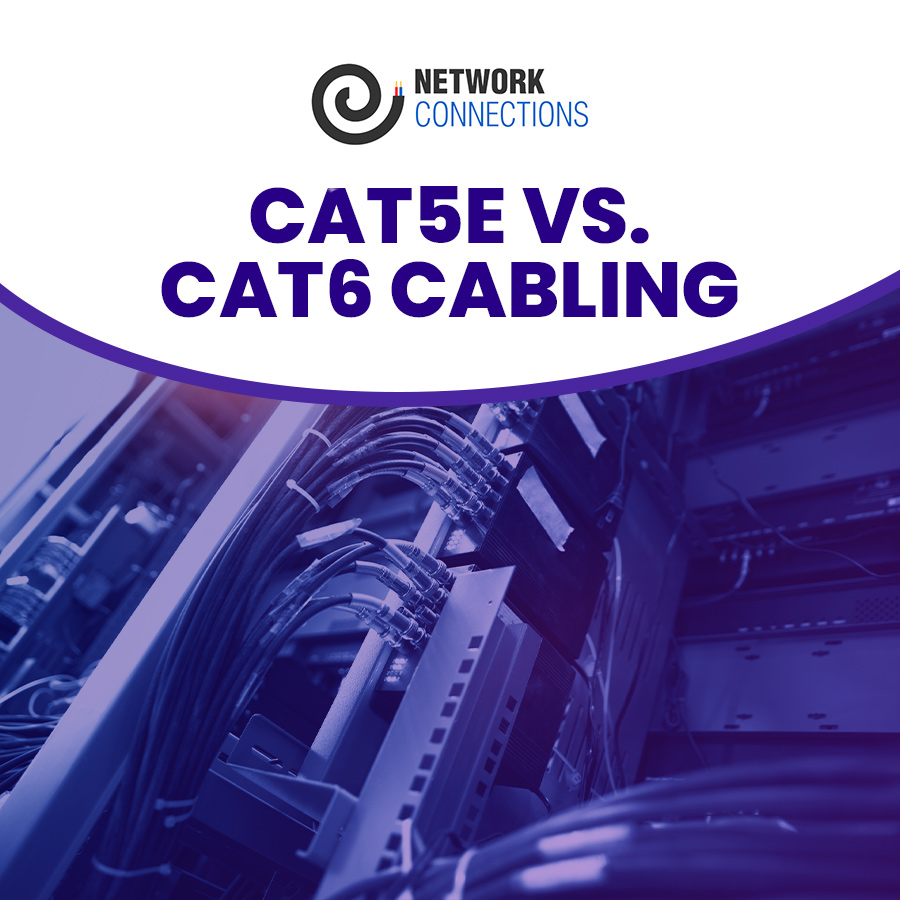At Network Connections, we want to help you do what’s best for your business, and we offer a variety of cabling services to make sure you have a robust, reliable network. Our team offers a variety of cable options, including Cat5e and Cat6 cabling. In this article, we will go over some key differences between these two options to help you determine which choice is right for you.


• Bandwidth – One key thing to consider when choosing cabling for your network is bandwidth, or how much information the cables are able to transmit at once. Cat5e cables are designed to run at 100 MHz, a lower frequency than the 250 MHz of Cat6 cabling. This means Cat6 cables can process more data at a time than their counterparts.
• Speed – Another thing to keep in mind when choosing network cabling is the speed of the connection. Cat6 cables are designed to move data faster than the older Cat5e model—while Cat5e cables are only capable of running 1GBASE-T or one-gigabit ethernet, Cat6 cables can support up to 10GBASE-T or ten-gigabit ethernet. If you are looking for a fast connection, we recommend that you choose Cat6 cables.
• Noise or Crosstalk – When choosing network cabling, you should also consider how much noise or crosstalk each variety is prone to. Cat6 cabling is designed according to stricter standards to reduce system noise, which means the signals will go through your network and all its connections with fewer errors and a higher rate of data transfer.

